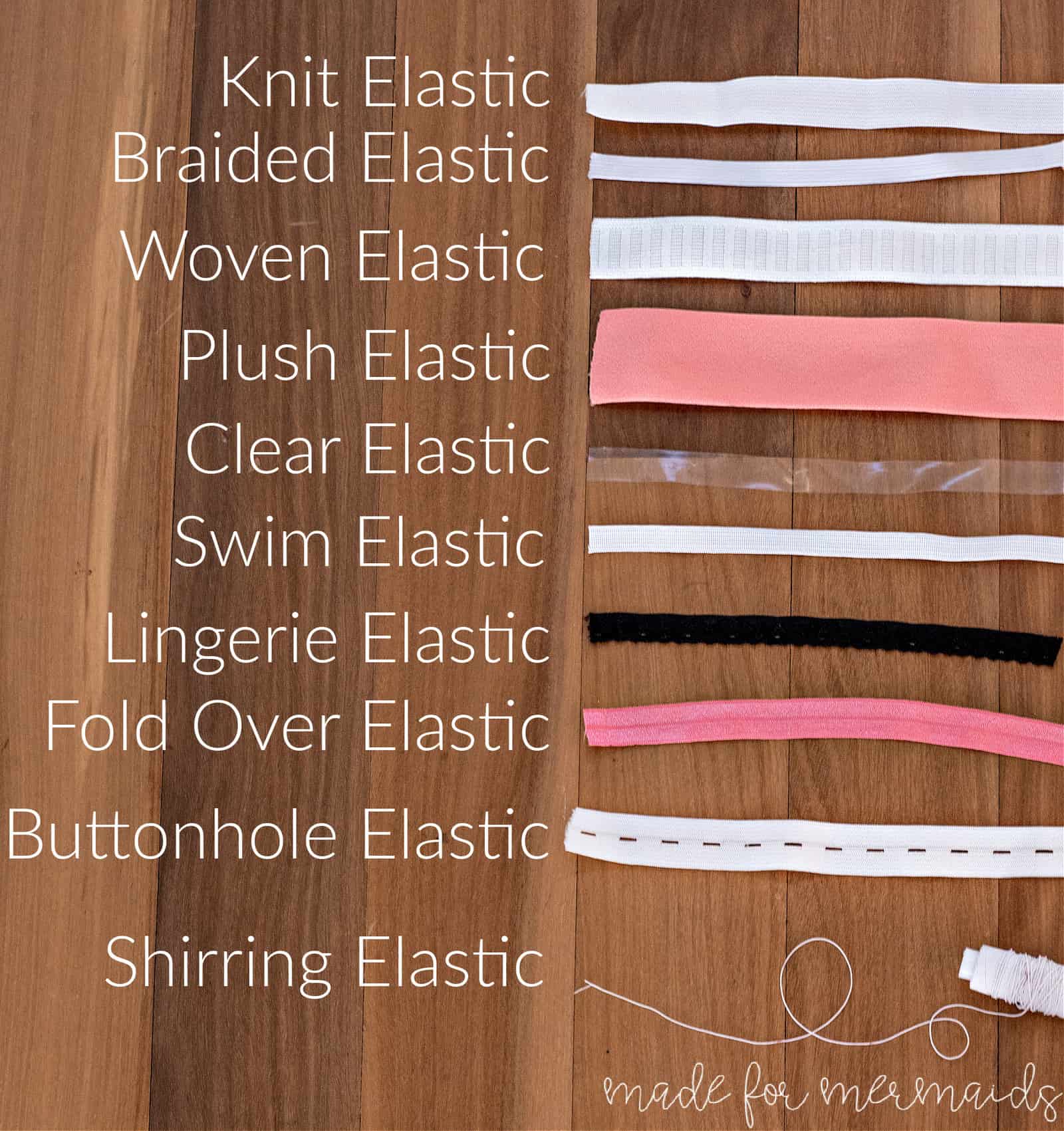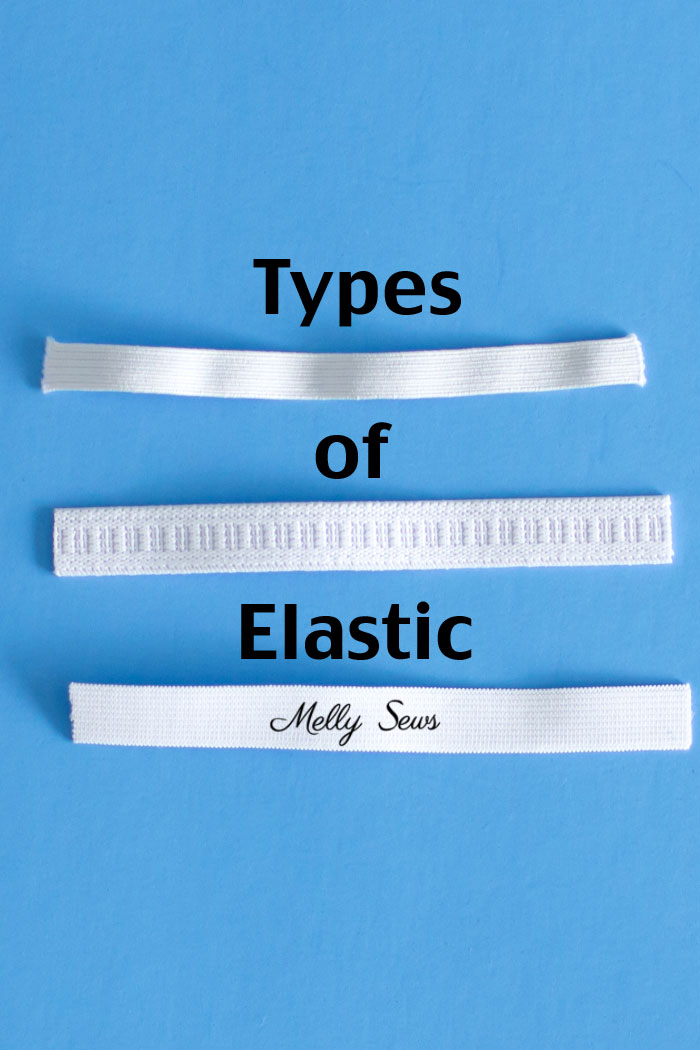Braided Vs Knit Elastic
Braided Vs Knit Elastic - Web it also endures pins without getting damaged. Does one type roll less? It is usually not as durable to endure heavier fabrics. Web generally, most elastics on the market are made from rubber or spandex strands, wrapped in polyester, cotton, or polyester fibres. Web woven and knit elastics maintain their width when stretched and usually can be sewn directly to fabric, whereas braided elastic narrows when stretched, and should be used in a casing. Elastic is classified by how it is manufactured as well as the fiber content. Web knit elastic provides a softer and gentler stretch compared with braided or woven elastic. However, they do narrow when stretched and have comparatively less grip than knitted or woven elastic. They lose resiliency when pierced through needles. Knit elastic also may lose shape and become looser over time. Web the best advantage of knit elastic vs braided is the knit while stretching in length retains it's original width. How to select the right. Web braided and knitted elastics. Braided elastic also rolls more easily than woven or knitted elastics, and tends to lose stretch if it is sewn through. Braided elastic is the most recognized elastic and what. Or do they just look different? Uses in waistbands and cuffs. Web generally, most elastics on the market are made from rubber or spandex strands, wrapped in polyester, cotton, or polyester fibres. Web all elastic begins with rubber or spandex cores that are wrapped in fiber — polyester, nylon, cotton — then woven, knitted or braided. Braided elastic also rolls. What is knitted elastic (knit elastic) 4. It is usually not as durable to endure heavier fabrics. These ribs make it narrow when it is stretched. Web all elastic begins with rubber or spandex cores that are wrapped in fiber — polyester, nylon, cotton — then woven, knitted or braided. These are then braided, knitted or woven into elastic. Knitted elastic, for example, is softer and contains thinner spines, making it easier to maintain its stretch when sewn through. They are therefore suitable for extremely lightweight fabrics and in places where rolling wouldn’t. Web in contrast, knitted elastics are softer and more comfortable against the skin, but may not offer the same level of durability. Web there are two. Web the best advantage of knit elastic vs braided is the knit while stretching in length retains it's original width. They are therefore suitable for extremely lightweight fabrics and in places where rolling wouldn’t. Where do i use it? While this is great when comfort is a priority, it may not be suitable for projects that require a firm and. Clear elastic is one exception, since the exposure of sunlight and harsh chemicals means it needs to be made differently to withstand such environments. Where do i use it? If you want to stitch through your elastic directly, knitted elastic might be the perfect option. Web knit elastic provides a softer and gentler stretch compared with braided or woven elastic.. Web there are two main types of elastic: Web most elastics range from 1/8 “to 2 1/2” wide. Braided has distinguished horizontal ridges that make it easier to grip materials. Understanding these differences empowers you to select the most suitable elastic for. Elastic thread (shirring elastic) 9. What is knitted elastic (knit elastic) 4. Knit elastic also may lose shape and become looser over time. Web knit or braided elastic is better for lighter fabrics, while woven elastic is better for heavyweight fabrics. Where do i use it? What is fold over elastic? What is knitted elastic (knit elastic) 4. Elastic is classified by how it is manufactured as well as the fiber content. Web braided and knitted elastics. Uses in waistbands and cuffs. Fortunately, i have got you covered with the scoop on how different types of elastic behave and. Web sure, your pattern calls for 1/2” elastic, but should you use knit, braided, woven, or sparkly? Buying elastic for home use. It is recognized by its horizontal ribs that run parallel to its length. Those ridges make this elastic have more “grip” but they also mean that braided elastic tends to narrow as it is stretched. Web there are. Braided elastic looks ribbed due to its construction process and should be used in casings only, not sewn through, as it easily distorts. Web both braided and knitted elastics have a unique knit pattern visible to the naked eye, especially when you stretch them. Braided elastic also rolls more easily than woven or knitted elastics, and tends to lose stretch if it is sewn through. What is lingerie elastic (picot elastic) more types of elastic. Does one type roll less? Buying elastic for home use. The difference of knitted elastic, braided elastic, woven elastic, and clear elastic. Types of elastic and uses: Web braided and knitted elastics. Web woven and knit elastics maintain their width when stretched and usually can be sewn directly to fabric, whereas braided elastic narrows when stretched, and should be used in a casing. Knitted is named for its similarity to a knitting pattern, like what crafters accomplished using needles and yarn. Where do i use it? Web sure, your pattern calls for 1/2” elastic, but should you use knit, braided, woven, or sparkly? Commonly found in widths from 1/8 to 1, braided elastic is easily identified by its horizontal ribs that run the length of the elastic. Elastic is classified by how it is manufactured as well as the fiber content. Braided elastic is probably what most of us think of when picturing elastic.
Types of Elastic for Sewing A Quick Guide Craftsy

Woven Elastic vs Knitted Elastic Types of Elastic

What is the difference between knit and braided elastic? YouTube

Knitted vs. Braided Elastics for Your Next DIY Project

Elastics 101

What is the Difference between Braided and Knitted Elastic? Knitted

Types of Elastic and When to Use Them Melly Sews

Braided vs. Regular Elastics The Main Difference

Different Types Of Elastic For Sewing & How To Choose The Best

Different Types Of Elastic For Sewing & How To Choose The Best
Web Most Elastics Range From 1/8 “To 2 1/2” Wide.
It Is Recognized By Its Horizontal Ribs That Run Parallel To Its Length.
These Different Types Of Elastic Have Different Uses, So You Want To Pick The Right One For Your Project.
Braided (Above Left) And Knitted (Above Right.) This Is A Very Close Up Photo, But You Can See The Difference In Appearance Between The Two.
Related Post: